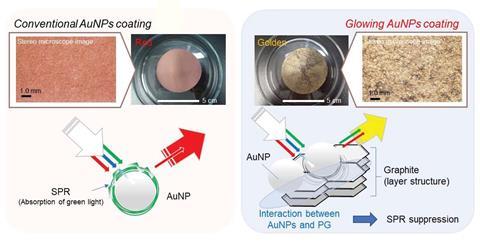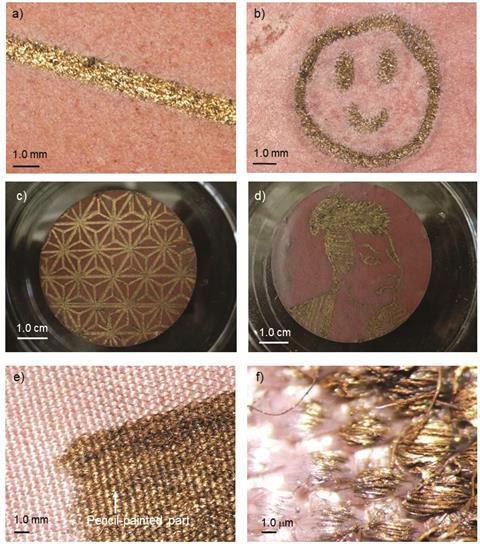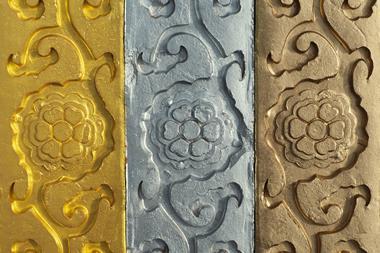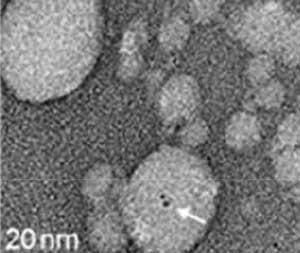Scientists convince free electrons from gold nanoparticles to behave like those of bulk gold
With a little help from pencil graphite, researchers in Japan have found a way to retain the lustrous colour of bulk gold in gold nanoparticles.

Arguably the most captivating property of gold is its glowing golden colour. However, downsizing it to the nanoscale changes its optoelectronic properties via the localised surface plasmon resonance (LSPR) effect, where coherent delocalised electron oscillations are confined at the particle surface. The result is that gold nanoparticles tend to be red or blue, depending on their size. To get the lost golden colour back, the LSPR effect must be suppressed.

Researchers led by Hiroshi Moriwaki at Shinshu University have now achieved this with a simple coating method. Moriwaki’s team drew designs using a pencil on cheap substrates like cellulose filter paper. They subsequently embed gold nanoparticles in the pencil graphite deposits using the successive ionic layer adsorption and reaction method. Interactions with the pencil graphite alter the nanoparticles’ properties, changing their colour from red to gold.
The team found that the nanoparticles retain some catalytic activity, and suggest they could also be used in luxury electronics.
References
This article is free to access until 12 April 2019
Y Kawabe et al, Nanoscale, 2019, DOI: 10.1039/c8nr10016k











No comments yet